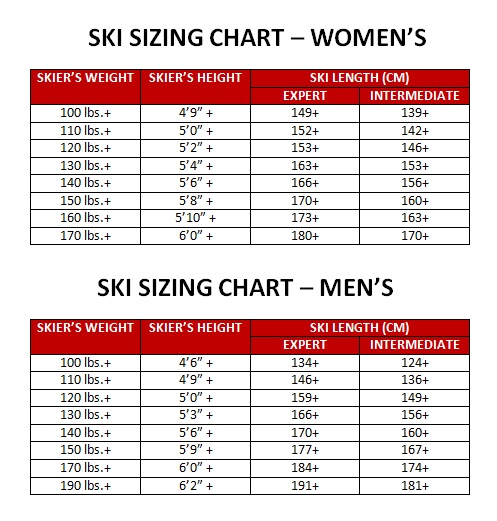Finding the Perfect Ski Length: A Guide to Effortless Glide
There’s a certain elegance to a skier in perfect harmony with their skis, gliding effortlessly down the mountain. Like a well-tailored suit, the right ski length can make all the difference. But how do you find that perfect fit? Choosing the correct ski size is a crucial step in maximizing your skiing experience, impacting everything from control and stability to speed and maneuverability. This guide will delve into the art of ski sizing, offering insights and practical advice to help you find the ideal length for your unique needs.
The quest for the perfect ski length isn't a new phenomenon. As skiing evolved from a mode of transportation to a recreational sport, the understanding of ski performance grew. Early skis, often crafted from a single piece of wood, were significantly longer than modern skis. With advancements in materials and ski design, like the introduction of metal edges and composite constructions, skis became shorter, allowing for greater agility and control. Finding the right size became less about simply staying afloat and more about optimizing performance for specific skiing styles.
The importance of proper ski sizing cannot be overstated. Skis that are too long can be cumbersome and difficult to control, leading to fatigue and frustration, particularly for beginners. Conversely, skis that are too short may feel unstable at higher speeds and lack the necessary float in powder snow. Correctly sized skis, on the other hand, provide a balanced and responsive feel, allowing you to carve turns with precision, maintain control in varied snow conditions, and ultimately, enjoy the mountain to its fullest.
Determining the appropriate ski length depends on a confluence of factors, including your height, weight, skill level, and preferred skiing style. While general guidelines exist, there's no one-size-fits-all formula. It’s about finding the sweet spot where the ski complements your individual characteristics and aspirations. This personalized approach to ski sizing is crucial for both comfort and performance.
Traditionally, a general rule of thumb for ski sizing was to have the skis reach somewhere between your chin and forehead when stood on end. However, this method is overly simplistic and fails to account for the nuances of individual skiing styles and preferences. Modern ski sizing takes into consideration a broader range of factors, allowing for a more precise and personalized fit. This shift reflects a deeper understanding of ski mechanics and the interplay between skier and equipment.
Numerous online ski size calculators can provide a starting point for determining the appropriate length. These tools typically consider height, weight, and skill level. However, consulting with a knowledgeable ski shop professional is invaluable. They can assess your individual needs and recommend skis that align with your skiing style, whether you're a cautious beginner or an aggressive expert. They can also provide insights into ski width, flex, and other important factors beyond length.
Benefits of correct ski sizing include enhanced control, improved stability, and reduced fatigue. With appropriately sized skis, you'll feel more confident navigating various terrains and snow conditions. This increased control translates to a more enjoyable and rewarding skiing experience.
Advantages and Disadvantages of Different Ski Lengths
| Ski Length | Advantages | Disadvantages |
|---|---|---|
| Shorter | Easier to maneuver, quicker turns, better for beginners and park skiing | Less stable at high speeds, less float in powder |
| Longer | More stable at high speeds, better float in powder, better for advanced skiers | More difficult to maneuver, requires more strength |
Best practices for determining ski size include considering your skiing style (e.g., on-piste, off-piste, park), consulting with a ski shop professional, and demoing skis whenever possible. Demoing allows you to experience different ski lengths and find the one that feels best for you.
Frequently Asked Questions about ski sizing often revolve around the impact of weight, skill level, and specific ski types. Understanding these factors and how they interact is crucial for making an informed decision.
Choosing the right ski length is an investment in your skiing experience. It's about finding the perfect harmony between you and your equipment, enabling you to glide down the mountain with grace and confidence. By considering your individual needs and seeking expert advice, you can unlock your full potential on the slopes and enjoy the thrill of skiing at its best. Don’t hesitate to ask questions and experiment until you find the perfect fit – your perfect pair of skis is waiting.
Conquering the contoh surat permohonan kerja sama your guide to collaboration domination
Toyota rav4 deciphering the new model maze
Unveiling the drama married at first sight chapter 2882






_4.png?itok=4kJ8WPPs)





